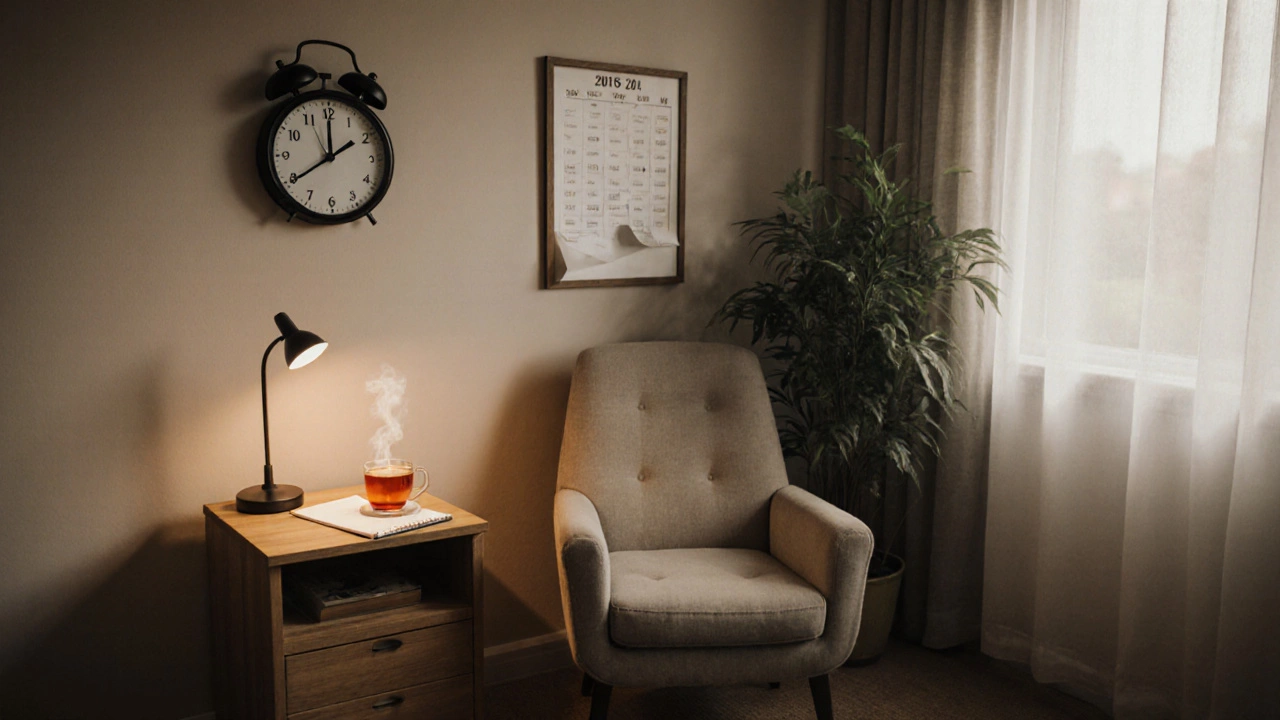The 10 most disabling mental illnesses can destroy a person’s ability to work, connect, or care for themselves. These aren’t just sadness or stress-they’re brain disorders with real, lasting impacts.
Read MoreMental Health Guide: What You Need to Know
Feeling stressed, anxious, or just a bit off? You’re not alone. Millions of people in India deal with mental health ups and downs every day. The good news is there are simple steps you can take right now to feel better, plus clear options for professional help if you need it.
First, try a quick check‑in with yourself. Ask: How am I sleeping? Am I eating regular meals? Do I move my body even a little? Small changes in these basics often lift mood fast. If you notice a pattern of low energy, racing thoughts, or constant worry, it’s time to look deeper.
Top Therapy Options
Therapy isn’t one‑size‑fits‑all. Here are three popular approaches you can explore:
- Cognitive‑Behavioral Therapy (CBT) – Focuses on spotting unhelpful thoughts and swapping them for realistic ones. It’s practical and works well for anxiety and mild depression.
- Mindfulness‑Based Therapy – Teaches you to stay present, notice feelings without judgment, and reduce rumination. Great for stress and panic attacks.
- Integrative or Deep Therapy – Looks at underlying patterns, past experiences, and body signals. It can be intense but often brings lasting change.
Choosing the right professional matters. If you want talk‑based help, a psychologist or therapist can guide you. Need medication, a psychiatrist is the one who can prescribe. Many people combine both – talk therapy for coping skills and a psychiatrist for medication when needed.
Common Mental Health Conditions
Some disorders show up more often than others. Knowing the signs helps you act early.
- Anxiety Disorders – Excessive worry, restlessness, and trouble sleeping. Simple breathing exercises, regular walks, and CBT can reduce symptoms.
- Depression – Persistent low mood, loss of interest, and fatigue. Light exposure, staying connected with friends, and professional therapy are key steps.
- Adult ADHD – More than just “being distracted.” It can cause impulsive decisions, emotional swings, and relationship stress. Structured routines and coaching help a lot.
- Dysthymia – A milder but chronic form of depression that sneaks in over years. It often goes unnoticed. Consistent therapy and mood‑tracking can bring it to light.
- Severe Illnesses (Bipolar, Schizophrenia) – These need a mix of medication, therapy, and strong support networks. Early diagnosis makes management easier.
When you’re unsure whether to see a psychologist, therapist, or psychiatrist, ask yourself: Do I need advice on coping skills, or do I suspect medication could help? A quick phone call to a mental health clinic can clear the doubt.
Remember, sharing in therapy is personal. You don’t have to spill every detail at once. Build trust gradually, set boundaries you’re comfortable with, and let the therapist guide the depth.
Lastly, don’t ignore non‑traditional options. Creative arts, regular exercise, and community groups can boost mood just as much as a weekly session. Try a hobby you enjoy, walk in nature, or join a support group online.
Take one step today: schedule a 10‑minute reflection, reach out to a trusted friend, or book a short call with a mental health professional. Small actions add up, and you deserve a life with less mental strain.
Learn how to recognize signs of mental illness in others and how to respond with care. Understand the difference between normal behavior changes and serious warning signs that need attention.
Read MoreExplore whether three years in therapy is excessive, how to gauge progress, and when to consider ending or adjusting treatment.
Read MoreUntreated ADHD can trigger academic setbacks, job instability, mental‑health issues, substance abuse, and even legal problems. This guide explains the long‑term risks and offers steps to get help.
Read MoreNot every “natural” herb calms you. Learn which herbs can trigger anxiety, why it happens, who’s at risk, and safer alternatives-backed by credible sources.
Read MoreExplore the most treatable mental illnesses with practical tips, real-world facts, and recovery stories. Learn what makes certain conditions easier to treat and how to take action.
Read MoreWondering if a psychologist or therapist is right for you? This article breaks down the key differences, what each professional can help with, and how you can figure out who fits your needs. Learn about their training, approaches, and even ask-yourself questions to make the process way less confusing. Plus, get tips to find someone who makes you feel comfortable opening up. No fluff, just real talk about getting help that works.
Read MoreStuck between seeing a therapist or a psychiatrist? This article strips away confusion and helps you decide which route fits your unique mental health needs. We’ll break down what each professional does, when to pick one over the other, and how your first session might actually look. Real talk about costs, common worries, and practical tips included. Finally figure out what actually works for your situation.
Read MoreExplore the most profound forms of mental health therapy that delve deeper than traditional methods. Discover how these therapies uncover root causes of emotional pain and foster genuine healing. Learn about intriguing techniques that transform the way we think about our mental well-being. This article sheds light on therapies designed to reach the heart of psychological distress.
Read MoreAdult ADHD isn’t just about losing focus or being forgetful; it carries challenges like impulsivity, emotional turmoil, and relationship strains. Understanding its underbelly can shine a light on the invisible struggles faced daily. This article unfolds the complexities while offering practical tips to manage these darker aspects. Let's untangle the reality of living with ADHD in adulthood.
Read MoreAnxiety disorders are the most diagnosed mental health condition globally, affecting millions of people. This article delves into what it means to live with an anxiety disorder, including its symptoms, potential causes, and treatment options. Readers will also find some practical tips for managing anxiety in daily life and insights into the latest research on the disorder.
Read MoreMany people wonder about the scope of sharing in therapy sessions with their therapists. Is there such a thing as sharing too much? This article explores the idea of oversharing in the therapeutic context, highlighting important considerations like trust, boundaries, and personal comfort levels. We seek to understand the dynamics between client and therapist and how to foster a productive and safe therapeutic environment.
Read More















